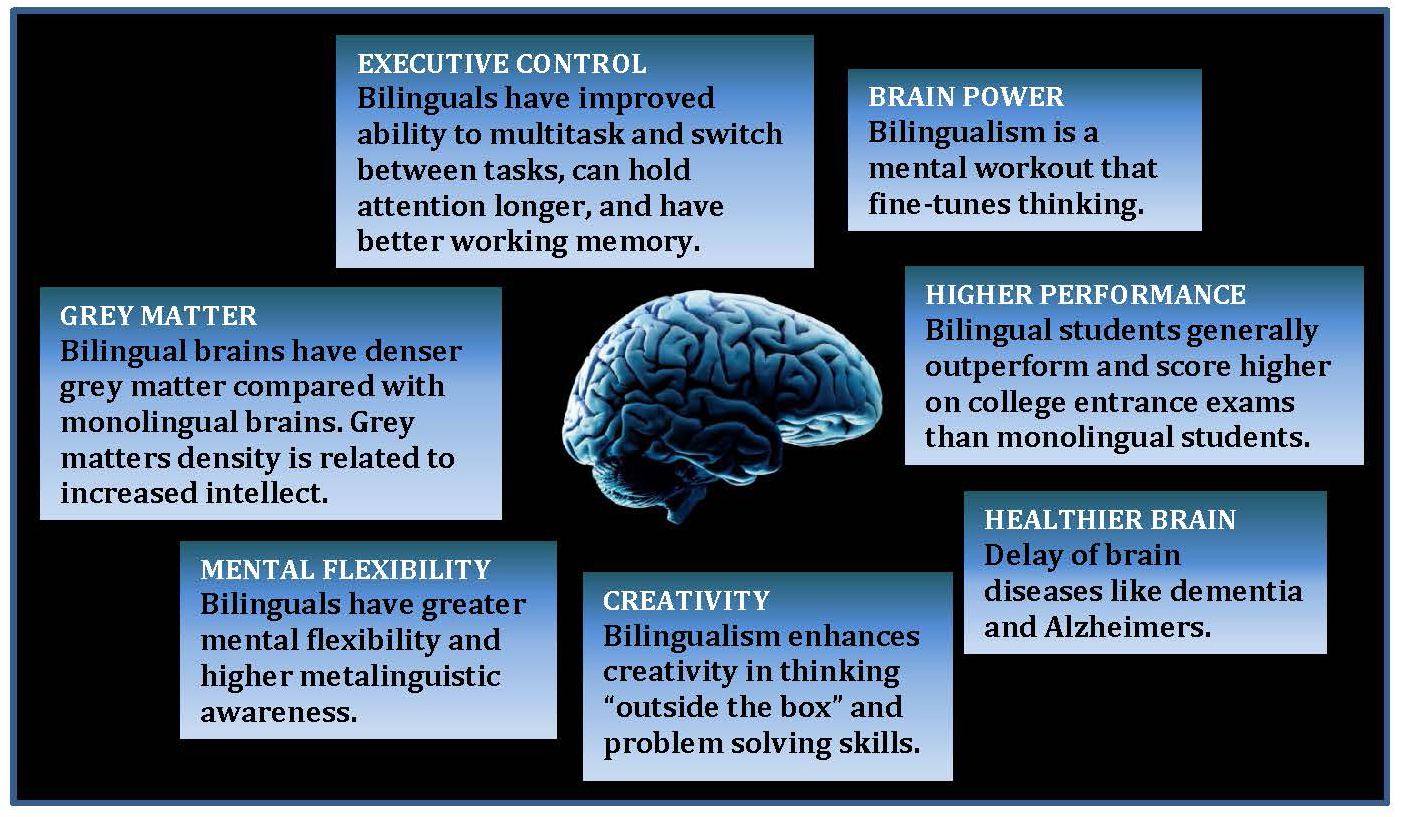

Luk and colleagues performed a diffusion tensor imaging (DTI) scan on 14 healthy older lifelong bilinguals and compared them with scans from 14 healthy age-matched monolingual participants. This would explain the cognitive benefits of bilingualism as a result of better connectivity between brain areas. The observed advantages for executive functioning performance in older bilinguals led Luk and colleagues ( 5) to investigate whether these advantages are related to significant effects in the WM structure of older bilinguals. We propose that learning and actively using an L2 after childhood can have rapid dynamic effects on WM structure, which in turn may assist in preserving WM integrity in older age. monolinguals in several WM tracts that have been linked to language processing and in a pattern closely resembling the results reported for older and early bilinguals.

Our Tract-Based Spatial Statistics analysis revealed higher fractional anisotropy values for bilinguals vs. This study investigated whether young, highly immersed late bilinguals would also show structural effects in the WM that can be attributed to everyday L2 use, irrespective of critical periods or the length of L2 learning. This observation comes from research looking at early and older bilingual individuals who have been using both their first and second languages on an everyday basis for many years. Recent studies suggest that learning and using a second language (L2) can affect brain structure, including the structure of white matter (WM) tracts.


 0 kommentar(er)
0 kommentar(er)
